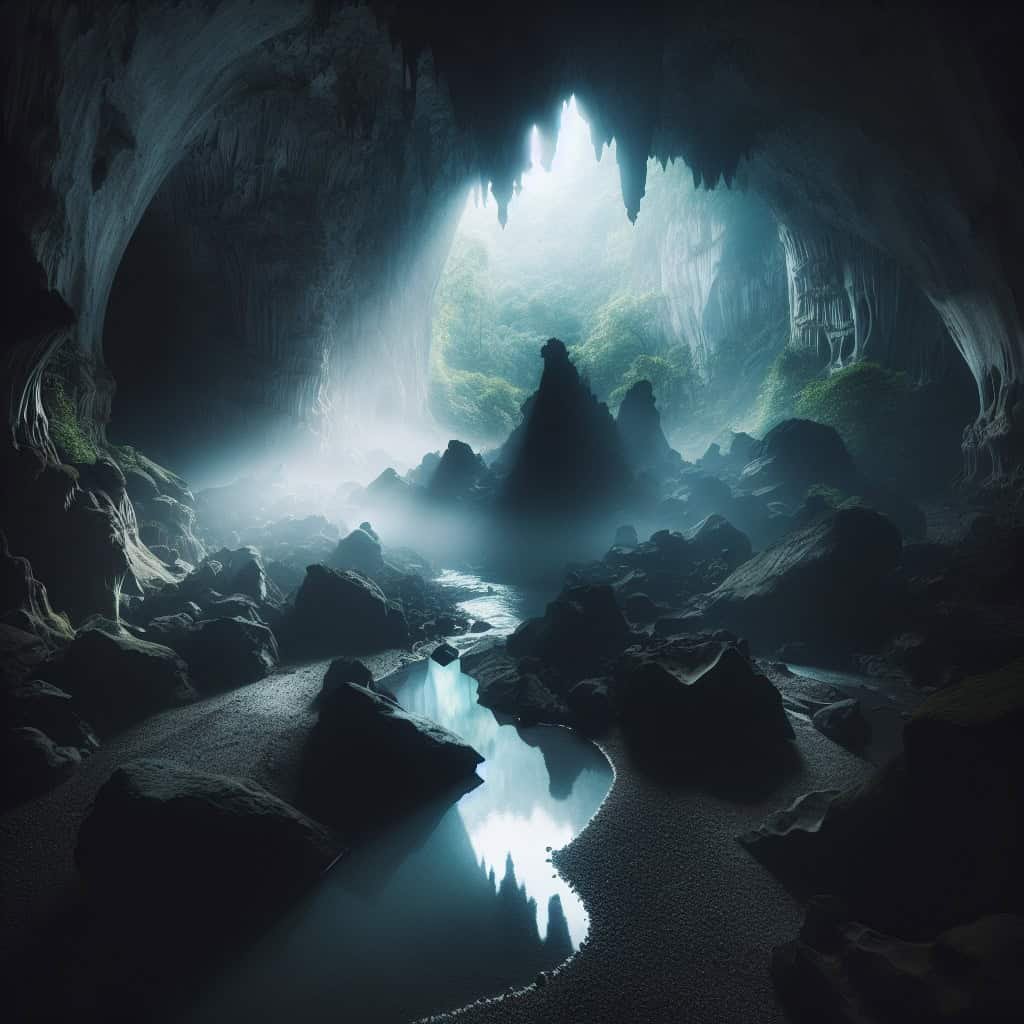Nicaragua, a country known for its stunning landscapes and natural wonders, holds a captivating secret beneath its surface. Nestled within its diverse terrain lies the possibility of uncovering hidden caves and underground formations waiting to be explored. From the rugged mountains to the dense rainforests, this Central American gem boasts a vast array of geological marvels just waiting to be discovered. So, if you’ve ever wondered about the existence of these hidden treasures, Nicaragua has a treat in store for you. Lace up your boots, grab your headlamp, and embark on an adventure like no other as you delve into the depths of Nicaragua’s underground world.
The Geography of Nicaragua
Nicaragua, located in Central America, is known for its diverse geography and stunning natural landscapes. The country is bordered by Honduras to the north and Costa Rica to the south, with the Pacific Ocean to the west and the Caribbean Sea to the east. Rich in both cultural and natural heritage, Nicaragua offers a plethora of breathtaking sights and unique exploration opportunities.
Landforms and Topography
Nicaragua’s landforms and topography are characterized by a mix of volcanoes, mountains, valleys, and coastal plains. One notable feature is the Central American volcanic arc, a chain of around 50 volcanoes extending from Mexico to Panama. Nicaragua boasts a significant number of these volcanoes, including several active ones. Volcanic activity has shaped not only the country’s topography but also its underground wonders, particularly its caves and underground formations.
Volcanic Activity in Nicaragua
Nicaragua sits on the Pacific Ring of Fire, an area of intense volcanic and seismic activity. The country is home to some of the most active volcanoes in Central America, such as Masaya, Momotombo, and Telica. These volcanoes not only provide stunning views but also contribute to the formation of caves and underground formations. Volcanic activity, including lava flows and ash deposits, plays a significant role in the creation and development of Nicaragua’s subterranean wonders.
Exploring Nicaragua’s Underground Wonders
Nicaragua’s underground wonders hold a fascinating world waiting to be discovered. Caves and underground formations offer both natural beauty and valuable insights into the country’s geological history. Exploring these hidden treasures is an adventure that combines excitement, awe, and a deeper understanding of Nicaragua’s geological heritage.
Understanding Caves and Underground Formations
Caves are natural cavities formed within the earth’s crust. They are created through various geological processes, such as erosion, dissolution of rocks, and volcanic activity. Nicaragua’s caves often feature unique formations, such as stalactites (hanging from the cave’s ceiling) and stalagmites (rising from the cave’s floor), which are formed by mineral-rich water dripping and depositing minerals over time.
History of Cave Exploration in Nicaragua
Nicaragua’s caves have held a long-standing fascination for explorers and scientists alike. The country’s rich history of cave exploration can be traced back to early indigenous civilizations, who utilized these underground spaces for ceremonial purposes. In recent decades, dedicated explorers and researchers have made significant contributions to the mapping and understanding of Nicaragua’s caves, unraveling their mysteries and shedding light on their ecological importance.

Known Caves in Nicaragua
Nicaragua is home to numerous known caves that have captivated the imagination of adventurers and researchers. These caves exhibit unique characteristics, making them popular destinations for both locals and tourists seeking to experience the country’s underground wonders.
Cueva del Viento
Cueva del Viento is a remarkable cave located in the Masaya Volcano National Park, near the capital city of Managua. This lava tube cave, formed by the cooling and hardening of molten lava, stretches for over two kilometers and features towering lava formations. It offers visitors a chance to witness firsthand the remarkable geological processes that have shaped this stunning underground wonder.
Cueva de los Encantos
Nestled within the lush natural surroundings of the Mombacho Volcano Natural Reserve, Cueva de los Encantos enchants visitors with its beauty and tranquility. This cave boasts a mesmerizing array of stalactites and stalagmites, illuminated by natural light filtering through openings in the cave’s ceiling. Its serene atmosphere makes it a popular destination for spiritual and meditation retreats.
Cueva del Espíritu Santo
Located in the northern department of Jinotega, Cueva del Espíritu Santo is an enchanting cave that boasts an incredible underground river system. Explorers can embark on an unforgettable journey through the cave’s winding passages, guided by the soothing sound of flowing water. The ethereal beauty and remote location of Cueva del Espíritu Santo make it a hidden gem waiting to be discovered.
Undiscovered and Hidden Caves
While Nicaragua’s known caves offer awe-inspiring experiences, there is still much to be explored in terms of undiscovered and hidden caves. The country’s vast and remote regions hold the potential for new discoveries, enticing adventurers and scientists to venture into uncharted territory.
Remote Regions and Inaccessibility
Nicaragua’s diverse geography includes vast areas of rainforests, mountains, and swamps, which pose challenges in terms of accessibility and exploration. Remote regions, often untouched by human interference, offer untapped potential for hidden caves and underground formations. These areas present exciting opportunities for intrepid explorers to make new discoveries and uncover the secrets of Nicaragua’s subterranean world.
Potential for New Discoveries
Nicaragua’s underground wonders have been the focus of ongoing scientific research, attracting the attention of speleologists from around the world. With advancements in technology and mapping techniques, there is a growing potential for new cave discoveries in Nicaragua. Continuous exploration and study of the country’s geological features are essential to uncovering hidden caves and expanding our knowledge of Nicaragua’s unique underground landscapes.

The Cueva de la Bruja Mystery
Nicaragua’s caves not only offer geological wonders but often carry with them mysterious legends and folklore. One such enigmatic cave is the Cueva de la Bruja, known as the Witch’s Cave. This cave is the subject of local legends and captivating tales, adding an air of mystery and intrigue to its already captivating allure.
Local Legends and Folklore
According to local folklore, the Cueva de la Bruja is believed to be the dwelling place of a powerful witch who possesses magical powers. Legends tell stories of individuals who ventured into the cave, never to return, leading to speculation about supernatural forces at play. These stories have sparked interest among both locals and outsiders, fueling the desire to uncover the truth behind the Cueva de la Bruja mystery.
Efforts to Uncover the Truth
Despite the legends surrounding the Cueva de la Bruja, efforts have been made to demystify its secrets. Researchers and explorers have conducted expeditions to explore the cave and shed light on its geological formations and potential connections to the local folklore. By combining scientific methods with local knowledge, these efforts aim to unravel the mysteries and separate fact from fiction.
Formation and Features of Nicaraguan Caves
Nicaragua’s caves exhibit a diverse range of formations and features, shaped by various geological processes. Understanding the formation and characteristics of these caves provides valuable insights into the country’s geological history and the forces that have shaped its unique underground landscapes.
Limestone Caves
Limestone caves are typically formed through the dissolution of soluble rocks, such as limestone, by acidic water over thousands of years. In Nicaragua, these caves often feature magnificent stalagmites, stalactites, and other formations created by the slow deposition of minerals. Limestone caves can be found in regions with limestone bedrock, such as the central and northern parts of the country.
Volcanic Caves
Nicaragua’s volcanic activity contributes to the formation of volcanic caves, also known as lava tube caves. These caves are formed when lava flows during volcanic eruptions, creating long, tubular tunnels as the outer layer of the lava cools and hardens while the molten lava continues to flow underneath. The insulating properties of the hardened lava create a stable environment conducive to the formation of unique geological features.
Stalactites and Stalagmites
Stalactites and stalagmites are common features found in many of Nicaragua’s caves. Stalactites hang from the cave’s ceiling, formed by the deposition of mineral-rich water dripping from above. Over time, these droplets of water deposit minerals, creating elongated formations suspended from the ceiling. Stalagmites, on the other hand, rise from the cave’s floor, formed by the upward growth of minerals deposited by water dripping onto the ground. These formations add to the allure and natural beauty of Nicaragua’s caves.

Ecological Significance of Nicaraguan Caves
Nicaraguan caves hold not only geological wonders but also serve as important habitats for unique species and play a crucial role in the country’s water systems. The ecological significance of these underground environments highlights the importance of their preservation and conservation.
Unique Species and Biodiversity
Caves provide shelter and unique environmental conditions that support specialized and often endemic species. Nicaragua’s caves are home to a diverse array of organisms, including rare and unique invertebrates, amphibians, and bats. Some of these species have adapted to the dark, nutrient-poor environments of caves, resulting in specialized characteristics not found in their surface-dwelling counterparts. Protecting these fragile ecosystems is crucial to ensure the preservation of these unique species and their contribution to biodiversity.
Role in Water Systems
Caves also play a vital role in Nicaragua’s water systems. Underground rivers and streams flow through caves, forming intricate networks that connect with surface water bodies. These underground water systems contribute to the replenishment of aquifers, regulate water flow, and filter pollutants, thereby maintaining the quality and availability of water resources. Appreciating the significance of caves in water management underscores the importance of sustainable exploration and conservation efforts.
Challenges and Rewards of Cave Exploration
Cave exploration offers a unique combination of challenges and rewards for those fearless enough to venture into the depths of the earth. From safety considerations to scientific and recreational value, exploring Nicaragua’s caves presents a multifaceted experience that both enthusiasts and experts can appreciate.
Safety and Precautions
Cave exploration carries inherent risks and requires careful preparation and adherence to safety protocols. Underground environments can be dark, slippery, and prone to sudden flooding or collapse. It is crucial for explorers to equip themselves with appropriate safety gear, including helmets, reliable lighting, sturdy footwear, and knowledge of rescue techniques. With proper precautions and training, however, the rewards of cave exploration can far outweigh the potential risks.
Scientific and Recreational Value
Cave exploration offers tremendous scientific value by deepening our understanding of geological processes, species diversity, and the country’s history. The discovery of new species, geological formations, and connections between caves and surface ecosystems contributes to scientific research and conservation efforts. Additionally, the recreational value of cave exploration cannot be underestimated. The thrill of adventure, the awe-inspiring views, and the sense of discovery create unforgettable experiences for those fortunate enough to explore Nicaragua’s underground wonders.

Organizations and Expeditions
Several organizations and individuals actively contribute to the exploration, study, and conservation of Nicaragua’s caves. Their dedication and passion for uncovering the country’s subterranean secrets ensure continued progress in our understanding and preservation of these fragile environments.
Nicaraguan Speleological Society
The Nicaraguan Speleological Society plays a pivotal role in promoting the exploration and understanding of Nicaragua’s caves. Composed of passionate speleologists and researchers, the society conducts expeditions, mapping projects, and scientific studies to advance knowledge in the field. Their collaboration with local communities and international counterparts serves as a catalyst for shared expertise and conservation efforts.
Prominent Cave Explorers
Nicaragua has welcomed many prominent cave explorers who have made significant contributions to the study and mapping of the country’s underground wonders. Their tireless efforts have resulted in the documentation of numerous caves and the unraveling of their mysteries. By sharing their findings and insights, these explorers inspire others to appreciate and protect the fragile beauty of Nicaragua’s caves.
Preservation and Conservation Efforts
Preserving and conserving Nicaragua’s cave environments is of utmost importance to ensure their long-term sustainability and continued scientific discovery. Understanding the threats these fragile ecosystems face and implementing sustainable exploration practices are vital steps in safeguarding the country’s underground treasures for future generations.
Threats to Cave Environments
Cave environments are sensitive and prone to disruption and degradation caused by human activities. Factors such as unplanned tourism, vandalism, pollution, and habitat destruction can irreversibly damage these fragile ecosystems. Additionally, climate change poses challenges, including alterations in water flow patterns and shifting ecological dynamics. Recognizing and mitigating these threats through education, responsible tourism, and effective conservation strategies is crucial to preserving Nicaragua’s cave environments.
Importance of Sustainable Exploration
Sustainable exploration practices are essential to strike a balance between scientific discovery and conservation efforts. This includes minimizing the impact on cave ecosystems, respecting local regulations, and involving local communities in the preservation and management of cave environments. By adopting a sustainable approach, explorers can contribute to the long-term viability of Nicaragua’s caves, ensuring that future generations will have the opportunity to appreciate and learn from these extraordinary natural wonders.
In conclusion, Nicaragua’s underground wonders, including caves and underground formations, offer a wealth of geological, ecological, and cultural treasures waiting to be discovered. From the captivating beauty of known caves to the potential for new findings in remote regions, Nicaragua’s caves inspire awe, curiosity, and a deep appreciation for the natural world. Through responsible exploration and conservation efforts, we can ensure the preservation of these remarkable underground landscapes and continue to unravel the secrets they hold. So, pack your gear, embrace adventure, and embark on a journey into the depths of Nicaragua’s hidden wonders.

